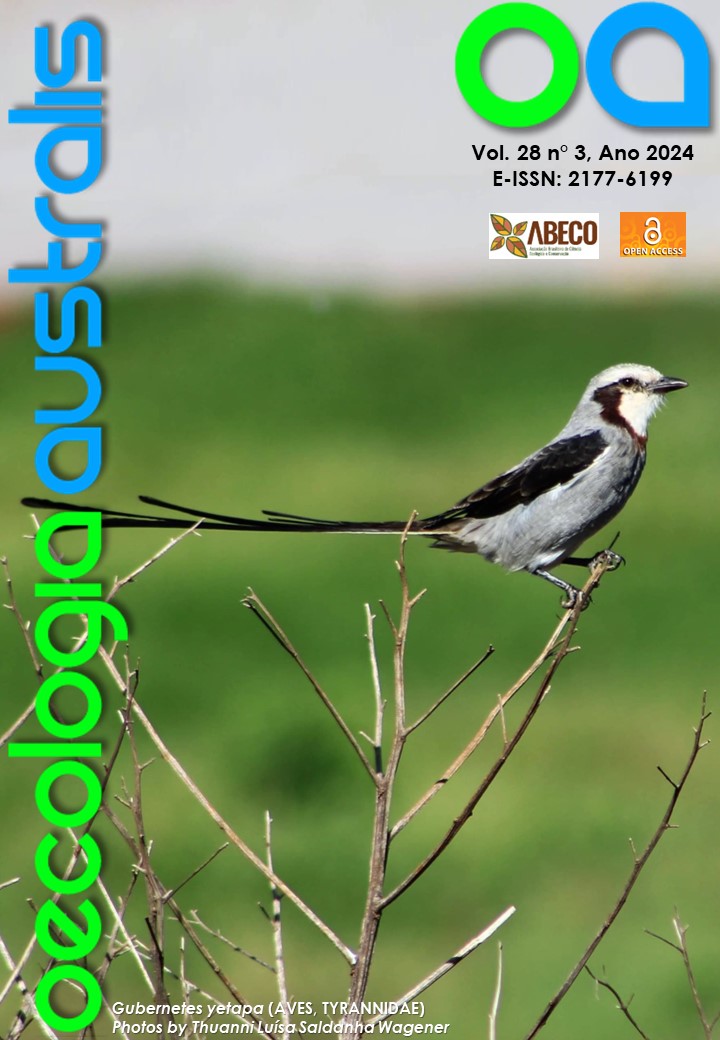BIOLOGICAL ASPECTS OF Ameivula nigrigula (SQUAMATA: TEIIDAE): FEEDING HABIT, SEXUAL DIMORPHISM, REPRODUCTION AND MATURATION OF FEMALES
Biological aspects of Ameivula nigrigula
DOI:
https://doi.org/10.4257/oeco.2024.2803.04Abstract
Life history information plays a crucial role in comprehending the evolutionary processes that shape ecological patterns within species, but there is limited information available on the reproductive and other aspects of tropical Squamata. In this study, we present a comprehensive analysis of dietetic and morphometric data, specifically related to the size and sex determination of Ameivula nigrigula, aiming to investigate if there is sexual dimorphism and identify the onset of sexual maturity in female individuals. By thoroughly examining the stomach contents, we observed that the majority of specimens retain food remnants, with a prevalence of small prey items such as Hymenoptera and Isoptera. Our findings reveal a lack of sexual dimorphism in terms of body size, indicating that males and females possess similar dimensions and proportions. Moreover, our investigations suggest that different color patterns do not correspond to distinct stages of female development, as chromatic variations are observed in both juvenile and ovigerous females. Consequently, dorsal coloration may not serve as a reliable indicator of sexual maturity. The observed chromatic variation is likely a form of polymorphism within the population, lacking the potential to determine life stages. Furthermore, our examination of female fertility reveals the presence of one to two eggs per female, consistent with findings in other Teiidae species.


